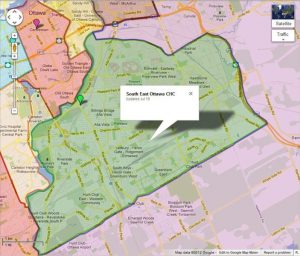No Community Left Behind was launched in 2005 as a social development initiative with the objective to prevent crime and address social determinants of health through a collaborative approach and integration of services at the neighbourhood level.
Over the past ten years, No Community Left Behind has become a strategy development process at the neighbourhood level in which community development specialists, community policing professionals and neighbourhood activists and almost all concerned service providers collaborate to address factors that lead to communities’ vulnerability, crime, victimization, fear of safety, and social exclusion.
The NCLB strategy development process leads to strategic action vis-a-vis community development, community-partners engagement, exploring opportunities for local development and adopting new ways to building stronger, healthier and safer communities.
Working in close partnership with various other agencies, South East Ottawa Community Health Centre (SEOCHC) has effectively engaged and supported communities to restore their sense of safety and pave the way for effective service delivery. NCLB has now become a core component of the City of Ottawa’s Community Development Framework (CDF) for community engagement at the grassroots level.
Program Area
NCLB is being implemented in several neighbourhoods in the above catchment area. It is not a one-time project; rather, it is a comprehensive strategy that brings all stakeholders in a community together to effect change. There could be many issues that are defined as a problem but can be solved through the collective persistence and responsibility of community stakeholders. Community mobilization would bring together interested stakeholders who develop viable solutions to problems—in itself, it is not the solution to problems.
The process of community mobilization leads to many positive outcomes. When executed correctly, community mobilization can help build a community in ways that building new structures or refurbishing old ones never can. Healthy communities begin with the community members who live in them. Empowering these individuals to engage in the rebuilding of their neighbourhoods is a critical step in promoting healthy communities. In addition to empowering community members, community mobilization processes would help create a vision for the community that serves to focus community members’ energies. Again, one of the challenges of distressed communities is that they often have no vision. As a result, resources may be redirected to other communities that are mobilized and articulate their requirements for further development.
In addition to empowering community members and helping create a vision for the community, community mobilization would have another positive impact: increased capacity for sound decision-making by community members as well as community-based organizations. Community mobilization would have some profound effects not only on the community members but also on the other stakeholders (public and private) who are attempting to serve the community.


